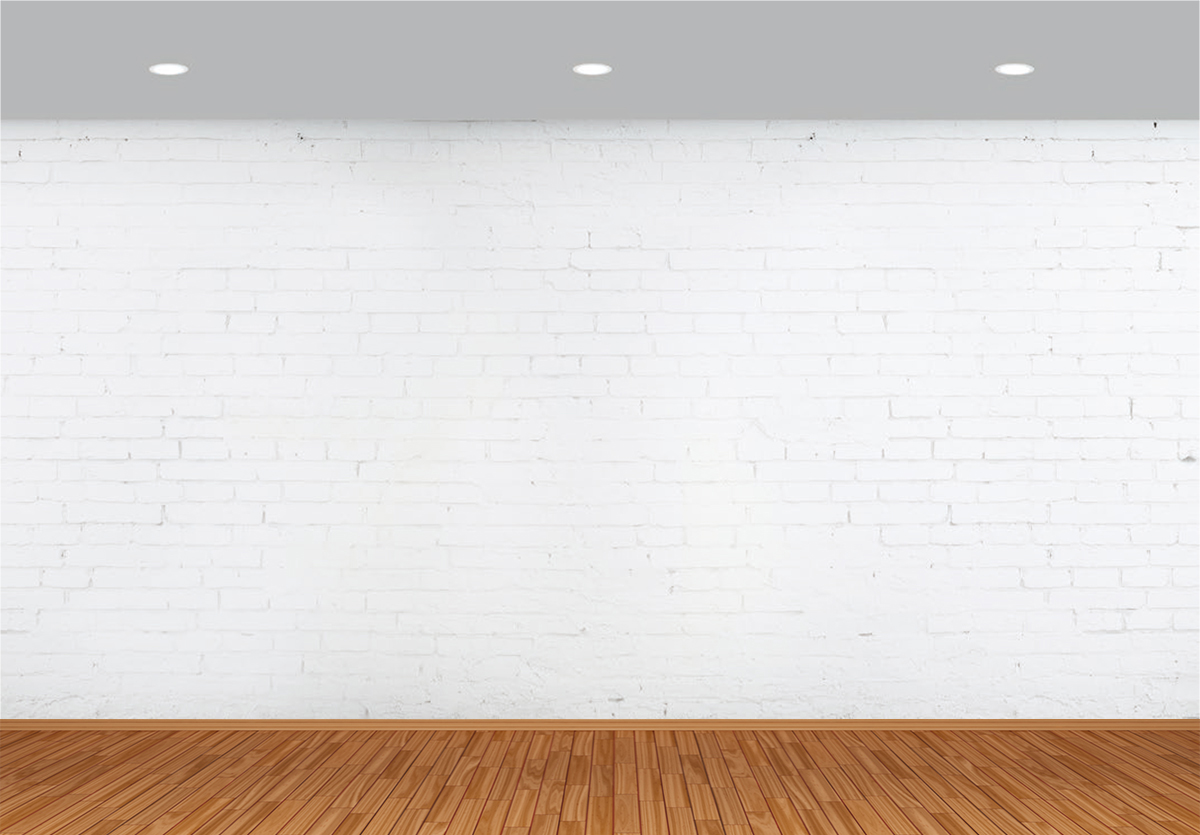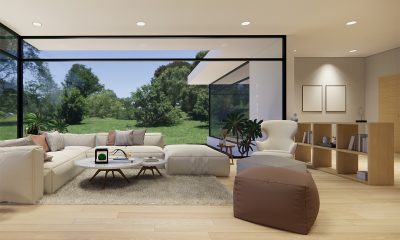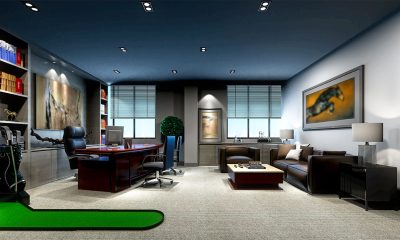What is a wall washing light
Recessed LED downlights that are offered with an asymmetric light distribution enables uniform illumination on vertical surfaces. The illumination of vertical surfaces can impact the perception of a visual environment more profoundly than any other type of lighting. It can make a room appear more open and spacious, flatten the wall’s visual appearance, and draw attention to a vertical feature. An even blanket or “wash” of light on vertical surfaces can minimize texture on the surface and gloss over imperfections in wall surfaces. Uniform vertical illumination also eliminates shadows on vertical displays such as large paintings, wall hangings, bookcases and shelving, or cabinet fronts. Vertical surface lighting that delivers this effect is referred to as “wall washing”.
Recessed wall washing
Recessed wall wash lighting illuminates vertical surfaces from top to bottom in a smooth graded wash of light. It distributes illuminance on the vertical surface as evenly as possible, horizontally and vertically. The fully saturated “wash” effect of lighting is achieved by positioning a row of recessed luminaires some distance from the wall or surface. The luminaires are aimed at an angle of incidence (e.g. 30 degrees from the vertical) to minimize shadows and allow glare-free viewing. A smooth, even gradation of light can be used to flatten out textured surface, provide illumination for vertical displays, or serve as the first layer of in a layered lighting scheme. Wall wash lighting that is recessed into the ceiling provides a clean ceiling appearance that is highly appreciated in modern and contemporary interiors. Thanks to its seamless architectural integration, recessed wall wash lighting finds extensive applications in art museums, office spaces, commercial showrooms, retail stores, and high-end contemporary residences.
Asymmetric light distribution
A recessed LED wall wash luminaire delivers asymmetric light to illuminate vertical surfaces. The asymmetric light distribution can be achieved using luminaires with a wall wash trim or luminaires with beam adjustability inside the housings. A variety of round and square wall wash trims are available to provide vertical illumination. The scoop wall wash trim that combines a directional reflector and a light scoop is the most economical way of producing asymmetric light. An open wall wash trim uses a kicker reflector that directs light toward wall surface. An angle cut reflector in combination with a spread lens creates consistent and even horizontal and vertical illumination. Adjustable LED recessed lights provide greater flexibility as well as high optical delivery efficiency and excellent glare control. These luminaires feature a lockable tilt mechanism to accommodate architectural aiming and control for wall wash lighting.
Construction and configuration
Recessed LED wall wash lights come mostly with a light engine that integrates an LED package or array into an die cast or extruded aluminum light source housing or heat sink. The LED driver and secondary optics are built into the light engine in some designs. The useful life of an LED, which is based on its color stability and lumen maintenance, is highly dependent on the control of LED junction temperature. Integrated design minimizes the length of the thermal path and allows conduction of the heat as efficiently as possible. In North America, the light engine is installed into a new construction or remodel housing rated for either IC/airtight or non-IC applications. This configuration allows the light engine to maximize surface area for heat dissipation by thermally interfacing the heat sink to the luminaire housing.
Light source
The light sources used in LED wall washers are more often than not mid-power SMD LEDs or chip-on-board (COB) LEDs. Wall wash lighting may be deemed of high color quality as a fantastic color experience with natural whites and vibrant colors is often a critical feature in its application scenarios. The ability of a light source to faithfully reproduce the colors of objects illuminated by the light source is dependent upon the spectral distribution of color components. In order to provide the most accurate color rendition, an adequate amount of radiant power must be distributed at each wavelength of the visible radiation spectrum of the light source. Most accent and display lighting applications expect high color rendering lighting with a CRI Ra of minimum 90 and an R9 value of minimum 25. LED light sources are offered in 2700K, 3000K, 3500K, 4000K, and 5000K color temperature options. Color uniformity is of the highest interest and importance in wall wash lighting applications. To deliver superior fixture to fixture color consistency and uniform color appearance on over the entire surface, the light sources are usually binned to within a 3-step MacAdam Ellipse.
LED driver
The LED driver regulates the current fed to the LEDs. The direct current that drives the LEDs must be maintained within a predetermined magnitude regardless of changes in the supply voltage or LED forward voltage. A constant current LED driver is typically designed as a switch mode power supply (SMPS) and incorporates a power factor correction (PFC) circuit and a current feedback circuit on the primary and secondary sides of a transformer, respectively. It can be dedicated 120-volt driver or designed with universal input voltage capability. The driver may be required to have built-in 0-10V dimming capability as well as a highly compatible implementation with legacy TRIAC (forward phase or leading edge) or ELV (reverse-phase or trailing edge) dimmers.



















Loading...
New member